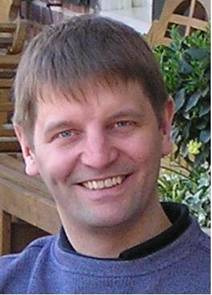Stakeholder welcome page: Academia
As a broad range of nano-enabled products are increasingly available, nanoforms inevitably enter the environment either directly or from the managed waste stream. The NanoFASE project was undertaken (2015-19) to progress the prediction of environmental distribution, concentration and form (speciation) of engineered nanomaterials (ENMs).
Potential release pathways from nano-enabled products have been analysed. With their nanoscale size resulting in high surface area and reactivity, ENMs then undergo reactions and transformations in contact with physically and chemically reactive species (suspended organic matter, molecules and ions) in both abiotic and biotic environments (e.g. in waste management installations, air, soil, water, sediment and biotic interfaces, such as the rhizosphere, gut, gills etc.). NanoFASE has detailed these reactions and processes governing transformation and transport of ENMs. The NanoFASE approach allows the potentially infinite physicochemical variety of nanomaterials and their transformation products to be incorporated into a spatio-temporal Water-Soil-Organism modelling framework for nanomaterial fate and exposure assessment. In this way, hazard testing can be targeted at including the actual exposure-relevant particles that organisms will encounter, to allow a more relevant and realistic assessment of potential environmental and human exposure and risks, and an understanding that also facilitates safe product design.
Using the graphic access point provided on this site – our Clickable Framework – you will find a host of resources to understand exposure assessment of ENMs in the environment:
- Key processes of transformation that nanomaterials may undergo before, during and after being emitted into the environment;
- Fate descriptors that can be used to quantify rates of nanomaterial transformation in the different compartments or ‘reactors’ of the environment (air, soil, water and biota) as well as waste management installations;
- Information and procedures on how to measure fate descriptors;
- The NanoFASE Model Catalogue including the NanoFASE water–soil–organism (WSO) model, and the key mathematical algorithms underlying the work.
You can use these resources to find out more about how ENMs enter and transform in the environment, how these transformations may be expressed in models and how the descriptors of these transformations can be quantified experimentally. We provide algorithms for these transformations to allow them to be incorporated into other models.
These resources, descriptive or directly applicable, can be accessed by clicking on the conceptual landing page figure to explore the highly interlinked pages of our Clickable Framework, or by using the detailed drop-down menus provided in the navigation bar. Visit the Site Map to get a full overview of the 160 pages available here.
While the Clickable Framework is not a live decision-support tool (exposure assessment cannot be run online here) we have included a detailed example of workflow – explaining how our algorithms and models fit into a tiered assessment, moving from first-tier "back of envelope" through to third-tier precise numbers for the spatiotemporal distribution of nanomaterials. NanoFASE work has contributed in this perspective to the enlargement of existing widely-used models. SimpleBox4nano, a leading instrument calculating mass flows for second-tier assessment, was adapted by adding three particulate chemical species to the dissolved species already included. The air compartment, seen as a route of exposure to soil and water, is represented through the LOTOS–EUROS atmospheric transport and deposition model). The NanoFASE WSO model itself has been designed to generally require the least possible calibration, and thus be applicable to the broadest range of geographical regions. Its 5 x 5 km scale with vertical distributions makes it relevant for local considerations.
|
NanoFASE modelling of fate and transformations in environmental compartments has taken a novel dynamic approach, tracking both nano form and mass in space over time. In this way we enable risk assessment to go beyond the "steady state" concepts and capacity of many models for traditional chemicals. Particular developments in the final project period (2019) include:
|
Read more |
|
Learn about the four-year NanoFASE project, and its major outcomes. |
Contact
 Claus Svendsen
Claus Svendsen
Project Coordinator
Natural Environment Research Centre (NERC)
Email: csv@ceh.ac.uk
 Stephen Lofts
Stephen Lofts
Centre for Ecology and Hydrology (CEH)
Email: stlo@ceh.ac.uk
Clickable Framework Editor
Institut Symlog de France

